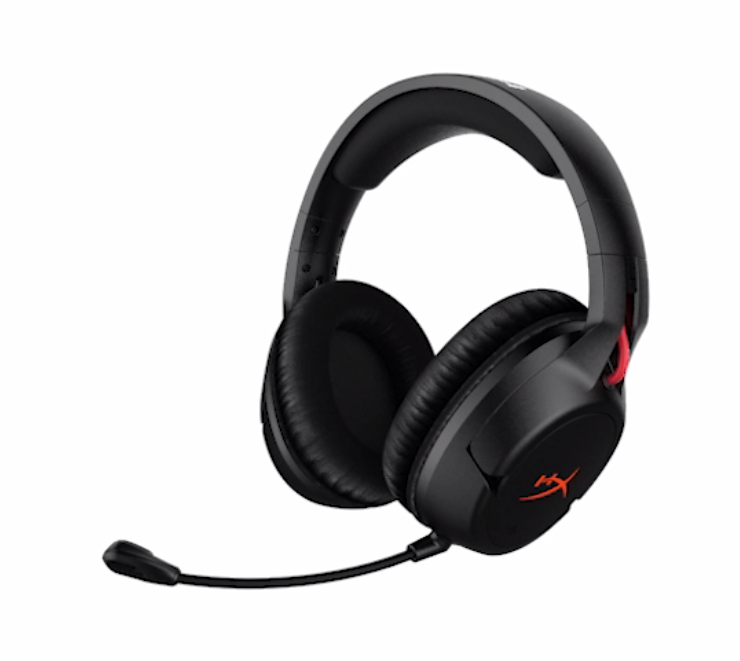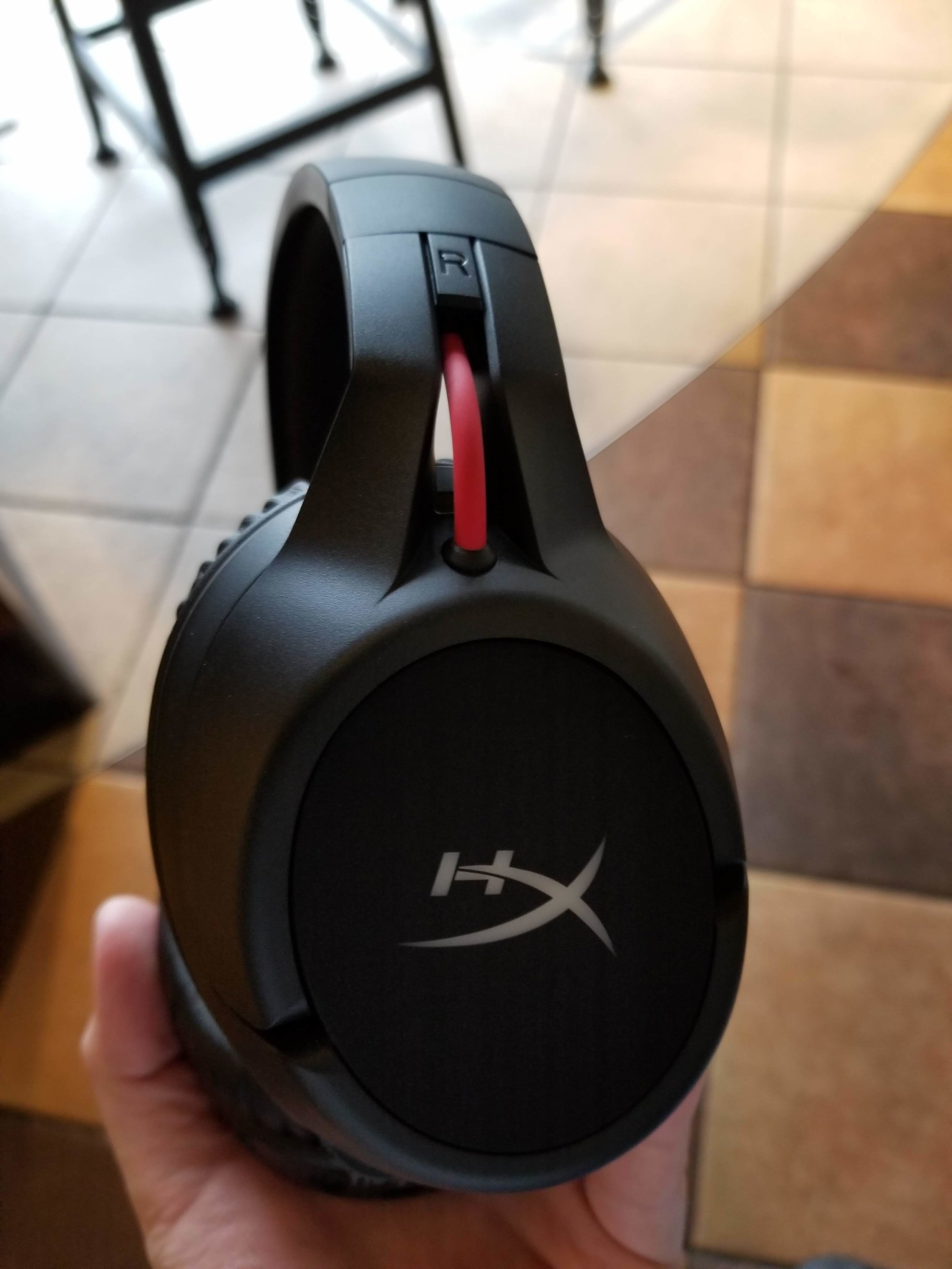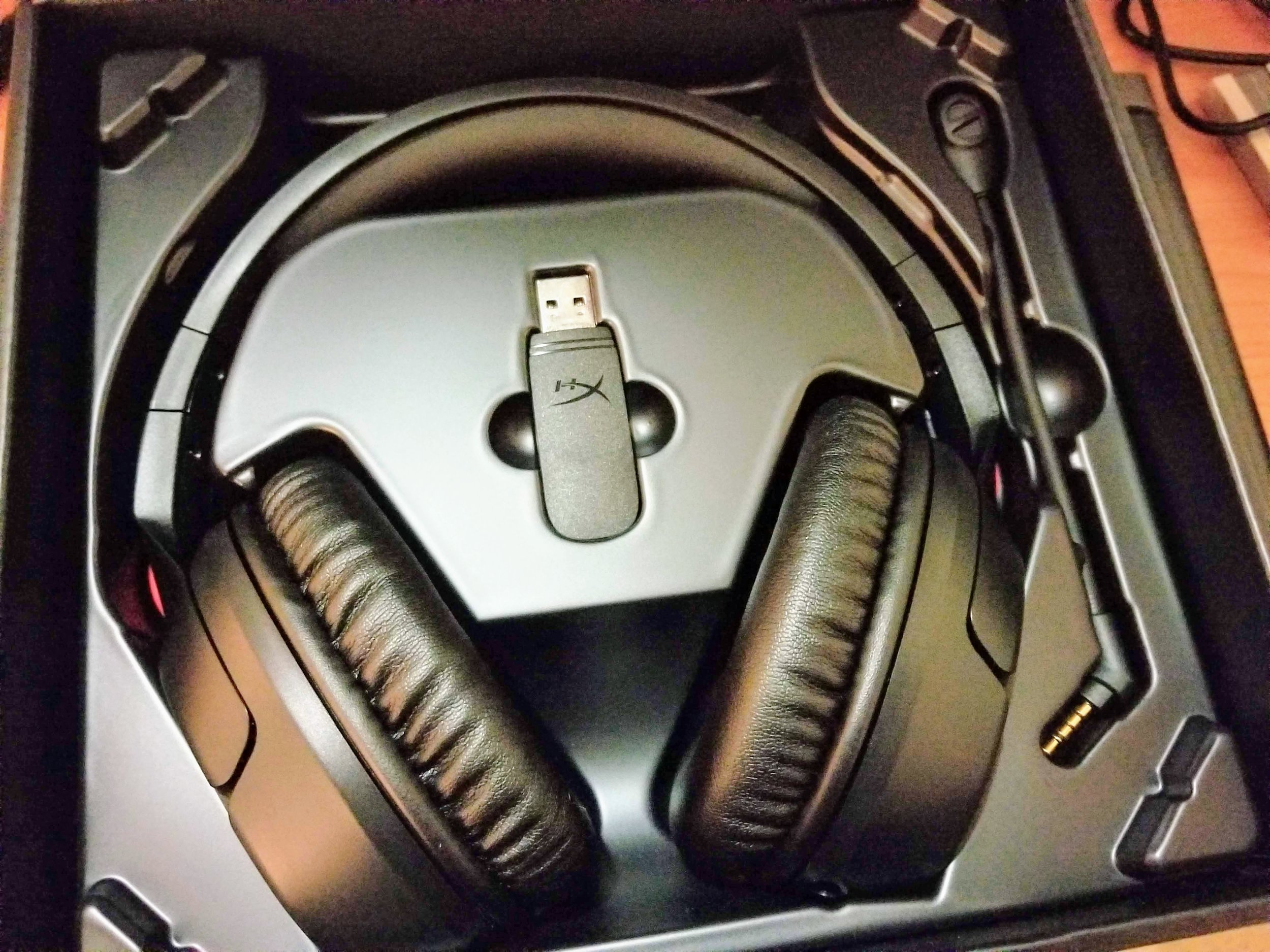HyperX Cloud Flight Wireless Gaming Headset Review
The HyperX Cloud Flight’s normal retail price is at least 10 dollars too expensive, and it’s lacking features that are common on other wireless models in the marketplace. And the microphone has some…challenges. But it also provides outstanding comfort, sound quality, and wireless performance.
If you find it on sale and can live with its compromises, it still manages to be a good thing.
I once said I wasn’t interested in reviewing it, but it went on sale at some retailers for $99. At that price I couldn’t say no.
OVERVIEW
HyperX’s Cloud Flight launched about a year ago, at a retail price of $159. That makes it more expensive than pretty much every other USB-based wireless gaming headset on the market, including the Astro A20, Plantronics RIG 800, Corsair HS70 and Void Pro, Logitech G533 and 933, and the Razer Nari…just to name a few in this crowded price range.
It’s a closed-back wireless stereo headset with a detachable microphone, and a driverless USB dongle that works on PS4, PC, Mac, and Switch(docked mode). There’s a secondary wired mode using a standard 3.5mm connection, but the microphone doesn’t work in this mode.
The Cloud Flight is HyperX’s only light-up headset, featuring red LED’s with a couple of preset lighting effects. The battery life is rated at 30 hours with the lights off, and half that with the lights on.
At launch, the only way to check the battery life was to wait for it to deplete, at which point the headset emits a series of beeps that tell you progressively how low you are below 20 percent. Now though, it’s compatible with HyperX’s NGenuity software, which will show you a proper battery gauge if you’re on a PC.
It nails many of the core things a headset needs, but fumbles everything else just enough that it’s not easy to give a full recommendation.
THINGS I LIKE
SOUND QUALITY
This might have my favorite sound of any HyperX audio product. And that’s saying a lot.
It’s not a whole lot different from their other headsets, signature-wise. If you’ve heard one of those, you have a rough idea of what to expect here. It’s a slightly v-shaped signature, with a bit of fun energy in the bass and a hint of sparkle in the treble. But it’s more refined and less aggressive than any other HyperX headset I’ve used.
The Cloud/Cloud II really tried hard to copy the DT770, and basically nailed it….but was a little scooped in the midrange and a little grainy in the treble. The Cloud Flight has a very similar sound, but with those flaws reduced.
The Cloud Alpha and Cloud Mix have more warmth and power in the bass, thanks to their dual-chamber design. They were really going for a fun warm sound that still had detail up top. The Cloud Flight retains that level of detail, but with a bit less oomph in the bass, leading to a slightly cleaner sound that bassheads might think is a little thin.
Like the Alpha and Mix, the Revolver provides a warmer bass feel than the Cloud Flight, and the widest soundstage of any HyperX product. But the Flight has a punch and crispness to the detail ranges that I think the Revolver lacks, a little.
While the Cloud Flight shares a lot of visual characteristics with the Cloud Stinger, their sounds are the most different. The Stinger has a heightened v-shape to it that’s much less neutral than the relatively balanced sound of the Flight.
I can tell that sound quality was a top priority in designing the Cloud Flight. It has a wonderful tone, and feels like it set out to fix the few flaws in that original Cloud II/Takstar Pro 80 sound. The bass is punchy and present without overstepping its bounds. The midrange is nicely forward, giving the right detail and bite to both male and female vocals. And the highs have just a little touch of the sparkle I personally enjoy, but don’t stab your ears in a way that makes them fatiguing.
Comparing all these signatures is like splitting hairs that are only a few decibels apart in key areas, something that measurements of these headsets bear out if you go look them up. You could probably EQ all of these headsets to resemble each other very closely, which is a testament to the type of sound that HyperX has stuck to over the years. It’s like they took a studio monitor and made it 20 percent more fun.
I like the sound of the Flight a great deal. I like a solid, accurate bass I can sometimes feel when big explosions happen. I like a natural timbre to female vocals., because that represents 80 percent of my music listening. I like enough upper mid and treble energy that I can feel all the details in my spine, and easily detect footsteps. The Cloud Flight provides all three, with solid imaging and soundstage for a closed-back.
Sound quality between the wireless and wired modes is very close, to the point where differences are probably down to my unreliable brain. Volume fiends will want the latest firmware update that increased volume for wireless mode.
More on the frustration of updating that firmware, later.
My thin-armed glasses do slightly impact the bass delivery and isolation for a few minutes, until the memory foam “memories” around them.
COMFORT
The only downside in the comfort department on the Cloud Flight is that the interior of the ear cups is a touch cramped. If you’ve found your ears touching the insides of the Cloud II in the past, that might happen here too. My ears just bump into the insides of the cups, but there’s a nice layer of foam in there over the driver, so it hasn’t been a huge issue.
Everything else is a big plus.
The headband padding is nice and squishy, allowing it to properly conform to the shape of your head. The ear pads are filled with HyperX’s classic memory foam, and the openings are large enough in diameter to fully surround almost any ear. The headband has a dramatically wide adjustment range. I normally have to use things almost fully extended…but on the Cloud Flight, I only have to use 6 of 11 clicks. This should fit just about anyone’s head.
Their 300 gram mass seems like it might make them a little heavy, but the weight is perfectly balanced between the cups and the headband, allowing these to have the same “invisible” character that every other HyperX headset product has.
The result of all this is a headset that’s just as comfy 3 hours in as it is in minute one…as long as you don’t mind the warmth that’ll get trapped by the leatherette padding.
ISOLATION
I don’t do scientific isolation tests. I sit in a loud coffee shop and plop the headphones on, and see how it goes.
The Cloud Flight does surprisingly well in the isolation department! It’s better at blocking out mid and high range noise than it is low rumbling noises…making it great for an office or coffee shop and not-so-great for a plane. But then when travelling, you’ll probably want an ANC pair.
I think I prefer its seal and isolation to the Cloud Mix just a bit, even though it’s a slightly tighter fit overall.
BUILD/DESIGN
I fully expected to hate the design of the Cloud Flight, since on first glance it looks like they took the body from the $50 Cloud Stinger and slightly upgraded it…but holding it in the hands reveals quality that’s hard to discern from promotional photographs.
While it shares some design language basics with the Stinger, the frame is built with better quality materials all around. This gives it a pleasant feel in the hand. The backs of the ear cups are rubberized. The metal core helps the headband feel strong and flexible. The plastics feel reasonably dense, with no rough edges to be found.
If you’re a die-hard “no screws must be showing” sort of person…you’ll be a bit disappointed. And the cables connecting the drivers to each other are exposed. But they’re coated in a very thick red rubber material, and set deep enough into channels that they shouldn’t ever snag on something and break.
The hinges are a bit loose that let you swivel the headset flat, but mine haven’t developed any creaking noises…yet. They could be a problem in the future, and they’re the only part that feels even a tiny bit suspect.
Design-wise, the headset has a slim profile against the head, and aside from the optional red LEDs and the red cable accents, their look isn’t out of place in a public setting. If the Stinger had employed a removable microphone, it would enjoy a similar level of pleasant aesthetics.
The wired mode uses a non-proprietary 3.5mm cable, and the microphone jack and plug are keyed so you don’t accidentally plug them into the wrong hole, or plug them in the wrong way.
If this were a normal pair of headphones, nailing all the above categories would be enough to get an unequivocally positive review. But this is a gaming headset.
THINGS I DON’T LIKE
MICROPHONE
The microphone on the Cloud Flight is…. barely adequate. And it has a lot of stupid little issues. It has over-aggressive background noise cancellation, both through analog and digital means. It has a very powerful noise gate that’s always applied. Noise gates listen for sound to get above a certain threshold before turning the mic on. This is good for filtering out noise when you aren’t talking…but it also negatively impacts audio quality. And if you’re not the loudest talker, your voice might not always pick up.
Also, the overall sensitivity of the microphone isn’t very high, meaning you’ll need to talk louder than with other pairs. It’s hard to tell if you’re just talking loud or yelling, because the headset doesn’t have a built-in sidetone function.
It feels like this mic was designed solely for loud room tournament environments where players are constantly yelling things at each other over the mic.
In a quiet room, sound quality is fine, but the noise gate and low sensitivity still get in the way of usability.
Also, the mic doesn’t have a foam pop filter, so that makes positioning even trickier than it already was with the sensitivity issue. It’s quite easy to suffer from breath or popping noises if you’re close enough to make your voice loud, but if you pull the mic back the quality dips and the noise gate kicks in and cuts things off.
Can you tell I had a frustrating time with this mic?
If HyperX’s NGenuity software included a way to turn the noise gate off, that would go a long way towards making this microphone better. The Arctis 7, Astro A20 , G533, and Rig 800 all have better mics, for my tastes.
Here are some mic tests.
DIFFICULT PAIRING PROCESS
After updating the headset to the latest firmware, I had to re-pair the transmitter and the headset. This requires holding down the power button on the headset for 10 seconds to engage pairing mode, then pressing a button inside a hole on the back the USB dongle while the dongle is plugged into a PC.
HyperX recommends using a “tiny pin” to press the button…and they aren’t kidding! Normally, I can get a bent paperclip to fit in this sort of hole, but that was still too thick. I had to borrow a teeny tiny pin from my girlfriend’s sewing kit to finally press the pairing button on the dongle.
There’s no reason this couldn’t have just been a regular button not contained behind a tiny hole. I realize that most folks won’t have to ever re-pair their headset. But if you want the latest software, which here increased volume output and only came out a few weeks ago, you’ll have to do it.
I hope you own a tiny pin.
LACK OF FEATURES
Since the Cloud Flight costs about $10 more than the average price of competing headsets, you’d think it would offer the same featureset…or maybe even something extra.
You’d be wrong!
The Cloud Flight doesn’t offer virtual surround sound, nor does it have a code for a Dolby Atmos unlock. It doesn’t even tell you to use the free Windows Sonic system in its instructional literature, like some other headsets do.
Now granted, its stereo performance is great. But when you’re charging a price premium, every detail is important.
At launch, the only way to see the current battery life was to wait for it to get below 20 percent, then interpret a series of beeps coming from the headset. Many people complained, and you can now download HyperX’s NGenuity software on PC to get a basic battery life indicator. But the headset itself still offers no hints beyond these beeps. Other headsets at this same price employ tricks with their power light, or voice prompts, to let you know how much power is left in your cans.
Although I really love the default sound signature, the headset has no built-in EQ profiles. You probably won’t need that function, but many other companies offer it at this price.
Do you like to balance your game and chat audio without having to dive into your Windows sound settings? Well, you can’t do that here. Game/chat mix dials are fairly ubiquitous in the upper end of the headset market, but HyperX doesn’t include one here.
The wired mode doesn’t require a proprietary cable…but the microphone doesn’t work while wired, either. That’s not a dealbreaker compared to competing models, some of which don’t offer a wired mode…but if the mic worked while wired this would be an exceptional all-in-one sort of product a la the Cloud Mix.
In fact, during use, I constantly found myself wishing this had the features of the Cloud Mix shoved into it. If the Cloud Flight had a bluetooth module and worked with the mic while wired, they could charge $200 for it and easily dominate every other wireless choice out there.
The only place where frills are apparent in the Cloud Flight is the packaging. The headset is very well packaged and protected, and the USB cable is wrapped in additional bubble wrap. I’ve never seen this particular touch before, in spite of receiving enough free USB cables to have a pile of them in my closet. It’s so weird that HyperX took the extra time and money to do this, but didn’t include other little features that are common at this price point.
While I think the red lights are cool, some folks might expect there to be full RGB lighting. Lighting of any kind is a real drag on wireless battery life, so I think HyperX made the right decision here.
It wouldn’t have been that hard to include a battery life indication of some kind, some basic EQ options, a chatmix dial, the ability to turn off the noise gate in the software, or a little piece of paper that said “use Windows Sonic!” I can understand that the engineering of their low latency wireless module might make including wired mic support more of a challenge. But the rest of these simple fixes would have brought this headset in line with the competition they’re charging ten dollars extra over.
HyperX used to be the kings of value. Many of their other products are unquestionably the best choice for value-conscious shoppers. You’re still getting a somewhat-great underlying product with the Cloud Flight. But you’re not getting the most features for your money unless you buy them at a discount.
FINAL THOUGHTS
I mostly love the HyperX Cloud Flight…but part of that is because I managed to snag it on sale for $99.
It’s clear that HyperX set out to create a solid, back-to-basics no- nonsense exceptional wireless headset with the Cloud Flight. They focused on all the things that matter as far as core audio listening features, but then kind of stumbled with the microphone and the extras. That would be fine... if this weren’t priced at a ten dollar premium over some serious competition.
If you’re mostly planning to use these on PC and PS4, and you don’t mind the lame microphone quality, then they’re still a good choice as far as sound, comfort, and battery life go. But for that same user, there’s no real reason to prefer these over the slightly cheaper A20 or Rig 800. Other than personal tastes about aesthetics and sound signature.
With a better microphone and a few additional software updates, the Cloud Flight would be my go-to recommendation for wireless gaming headsets. I love the way it sounds and feels, but I’m frustrated by its faults. Choosing to buy it means you’ve decided you can live with those compromises.
Further complicating matters is the recent release of the $99 Cloud Stinger Wireless. It doesn’t include a wired connection, and the mic is permanently attached. Because HyperX wants to flood their own lineup with tiny differences and make your choice more difficult.
I’m hoping to get one of those soon.
The awkward mix of good and bizarre that is the Cloud Flight is sort of endemic of HyperX’s whole lineup right now. They used to have one option, the Cloud/Cloud II, that was one of the best choices in gaming audio. As they’ve expanded to more and more products, it’s become more and more muddled. The same great core audio experience is still here in the Flight, but the value proposition just isn’t there at the regular retail price.













